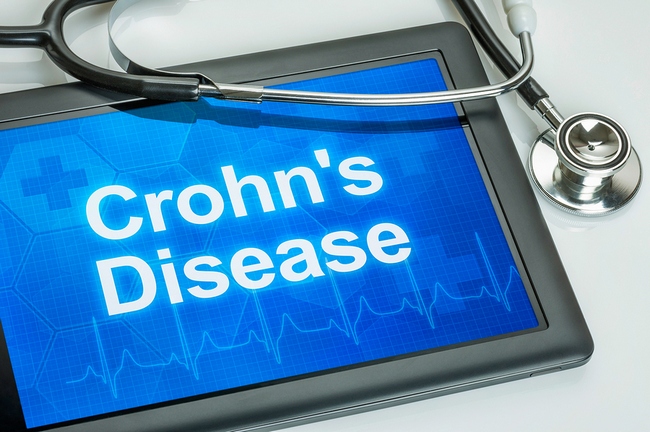- Make It Yourself Lavender Heart-Shaped Bath Bombs!
- 20 Things You Never Knew About “Down There”
- 12 Best Foods For Those Suffering From Arthritis Pain
- 12 Personal Hygiene Mistakes Almost Everyone Makes (Mom Never Told You About #4!)
- 15 Medicinal Plants And Herbs From The Cherokee People
- 12 Mind-Blowing Benefits Of Drinking Coconut Water During Pregnancy
- 12 Outstanding Winter Foods That Won’t Fatten You Up Like A Christmas Turkey
Crohn’s Disease Linked to Junk Food

Photo credit: bigstock
The UK’s Daily Mail featured an article recently that blames junk food for the ever increasing rate of Crohn’s disease among young people. There are currently three times as many 16 to 30 year olds with Crohn’s disease than there were just 10 years ago.
This article states that doctors in the UK are blaming this “epidemic” on the vast increase in the consumption of junk food, along with the increased use of antibiotics. Most Crohn’s patients have gut bacteria that is drastically out of balance, with the harmful bacteria outweighing the good bacteria in vast numbers. It also states that as many as ¾ of the Brit’s that have been diagnosed with this disease will eventually have to undergo surgery to reconstruct their bowels.
What exactly is Crohn’s disease?
This disease is a chronic inflammation of the lining of the digestive system, deep within the gastrointestinal (GI) tract. Crohn’s can occur anywhere within the GI tract, from the mouth to the rectum, it most often infects the small intestine or ileum.
The most common symptoms include frequent, yet unpredictable attacks of diarrhea, rectal bleeding, abdominal cramps, fatigue, loss of appetite, a general feeling of malaise, and weight loss. Crohn’s can come on suddenly and intensely, or begin mildly and then gradually becoming more severe.
It’s been noted that persons who take lots of antibiotics as youngsters tend to be more likely to develop this painful condition.
Across the pond, as the Brits say, it’s not too surprising that many Americans, especially children, are also being diagnosed in record numbers with Crohn’s disease, ulcerative colitis ( something similar to Crohn’s) and inflammatory bowel disease ( IBD). Current estimates state that perhaps hundreds of thousands of Americans now suffer from these diseases. It was not all that long ago that Crohn’s was considered a very rare disease. In just the last 30 years, Crohn’s cases have actually doubled.
Most times Crohn’s is diagnosed by a doctor that specializes in gastroenterology. The American Medical Association states that they believe that some of the main factors for Crohn’s is a genetic predisposition, combined with an immune system that is overactive and that is easily set off by infections or some impairment in the way that the body deals with viruses and bacteria in the intestines, which will cause this chronic inflammation of the intestines.
As you might expect, this theory will depend upon a treatment of expensive drugs such as immunosuppressive drugs and steroids the not only suppress symptoms, but that come with a wide range of side effects.
The symptoms and complications that come from these treatments include:
- Compromised function of the liver from these pharmaceuticals
- Blockage of the intestines due to a gradual thickening of the walls of the intestine due to an accumulation of scar tissue and ongoing inflammation
- Osteoporosis or weakened bones due to steroids
- Ulcers that make tunnels through the affected areas can then infect surrounding tissues
- Anemia which can occur due to an iron deficiency or directly from the disease itself.
- Malabsorption of nutrients due to the inflamed, diseased digestive tissue that is unable to absorb nutrients from foods
Continue to Page 2

Photo credit: bigstock
During the past 50 years, there has been a definite rise in Crohn’s disease, which more or less parallels the introduction of antibiotics and their widespread use. One pair of German researchers have theorized that Crohn’s is actually an infectious disease that might be caused by some sort of mutated bacteria flora that became a super bug under constant pressure from antibiotic use. Read more why antibiotics can be dangerous for our health.
The British conducted a study that evaluated the occurrence of ulcerative colitis, Crohn’s as well as other stomach problems in almost 4,000 people who had been given the live measles vaccine. Those at the highest risk for developing Crohn’s were those who had been given the measles vaccine. Three times higher, in fact! Two and a half times higher for ulcerative colitis. This study suggests that there is some type of correlation between the measles vaccine and inflammatory diseases like Crohn’s.
Researchers in Sweden discovered that those who eat fast food regularly and consume large amounts of sugar may also increase their risk of developing Crohn’s disease. Researchers at the Karolinka Institute published their findings in the journal of Epidemiology. They interviewed 152 people who had Crohn’s, 145 that had ulcerative colitis, and a control group of 305 people who had neither disease. The researchers asked them about their diets over the past 5 years. Their results showed that those who ate fast food at least twice a week were 3.4 times more likely to develop Crohn’s and 3.9 times more likely to develop ulcerative colitis.
These researchers also stated that those who ate more than 55 grams of sugar daily were 2.6 times more likely to come down with Crohn’s disease. Find out foods that hide sugar.
Although it’s not exactly clear how eating junk foods, or foods that are high in animal and saturated fats can cause persons to develop this disease, but some scientists believe that it somehow increases the chances of those who are genetically susceptible to this disease.
Other doctors state that although dietary issues can play a role, they believe it has something to do with gut bacteria. Persons with Crohn’s disease or colitis have a definite increase in bad bacteria in their digestive system and too few of the good types of bacteria. Many doctors say that some of their patients who maintain a healthy diet still develop Crohn’s disease. Of course, sometimes what people tell their doctors can vary from what they are actually doing.
Sources:
































